| Umělec 2011/1 >> Tillman Kaiser: abstract pop-culture | Просмотр всех номеров | ||||||||||||
|
|||||||||||||
Tillman Kaiser: abstract pop-cultureUmělec 2011/101.01.2011 Milena Dimitrova | geometry | en cs de |
|||||||||||||
|
It is a well-known fact that we think in terms of categories. But if we open them up, that which was dubious and ambiguous begins to be interesting. We start to reflect, to take a closer look, and–while our eye tries to sort and arrange–we re-evaluate. For these reasons, categories should occasionally be subjected to such a procedure.
The art of Tillman Kaiser possesses a certain ambiguity; his works cannot be clearly assigned to any specific artistic category or style. His paintings are most frequently placed somewhere within the tradition of Cubism and Expressionism, Surrealism and Dada. We can also find references to retro-futurism and borrowings from science fiction. But again and again, Kaiser is associated with modern art and modern utopias. According to one article about his work, the wide range of associations found in his art as well as its inability to be classified are an attempt at offering an alternative to the rationalist image of modern art usually resorted to by artists today, focusing instead on the occult, esoteric, obscure, unconscious, irrational and spectral as important aspects of modern art. As for the artist himself, Kaiser identifies with Surrealism, a style that in and of itself stands in contradiction to anything rational. We can find references to Surrealism and the unconscious in his insect paintings, flies or larva that he captures on canvas as silkscreen prints. What is more, his works betray his interest in, and investigation of, failed modernist utopias. These two components–Surrealism and modern utopias–also come together in the architecture found in Kaiser’s paintings: For one, he calls architecture that element in his art through which he filters his investigation of the personal and unconscious. What is more, architecture (and not technology, which would be another possibility) assumes the role of utopian indicator. If we consider the indicators for utopian models found in science fiction, we might classify Kaiser within soft science fiction, which defines itself through new architectural and social models, new models of living–as opposed to hard science fiction, which is much more rational and heavy on technology. For the architectural elements in his art, Kaiser consciously makes use of seemingly dystopian examples: architecture that could be from anywhere in the world, repeatedly appearing in fragments or in new combinations, sometimes as war machines; as, for example, on the folding screen found in Dicke Luft (Trouble’s Brewing, 2004), whose modernist building is based on an Asian metropolis. The building’s actual location and the time of its construction are not important, as Kaiser wants to avoid encouraging any context-based interpretations. This approach also strengthens the association and relationship to the utopian (or dystopian) and, as we know, “utopia” is not a place, but a “not-place.” If any human beings appear in his pictures, they appear only as symbols serving a specific function or role: soldiers, policemen, members of a group he calls servants, or a mass of people at a political event. In other words: a model of utopian life as opposed to fixed examples. When exhibiting his works, Kaiser often installs the paintings in combination with wallpaper resembling a stage set or backdrop, depicting patterns or scenes from found books or postcards. An important role is played by 1970s design–Kaiser’s sculptures remind us of futuristic pieces of furniture. His catalogues also make use of the cover art of catalogues for tools or educational materials from the 1950s and 1960s; additional found objects. As for the layered, radiating quadrangular metal forms repeatedly found in his pictures, these are reminiscent of mass-produced dinnerware from the 1950s. The objects in the pictures are not what they purport to be. Fragmented and reassembled, they are imbued with new meaning. Take, for instance, the inscription “turtox,” found on a building resembling a box of washing powder in Das Psycholyselabor (The Psycholytic Laboratory, 2005). If we enter “turtox” into Google, it would appear to be a former manufacturer of biological supplies and equipment–perhaps Kaiser’s source for the insect paintings and microscopic images that we find again and again as building blocks in his work. But nobody really knows what this “turtox” was and when it existed–if it existed. Is this the dark side of pop art, imagining consumer culture as an archaeological artifact? Such as the Waschmaschine (Washing Machine, the title of one of Kaiser’s sculptures), that symbol for progress and prosperity usually considered an achievement of the post-war era. All this would appear to be a neutral inventory taking of forms that have already lost their meaning, the extent of their meaning, their validity or their function, and which, as silkscreen on paper or canvas, are merged with egg tempera to create decorative, aesthetically appealing forms. In the end, what remains tangible is the way the artist plays with form, with the precise color and formal composition, with the aesthetic result. We do find a kind of artist’s statement on the back page of Kaiser’s 2005 catalogue, where we can read “March down Babylon” written in mirror image. Is it a message from Kaiser (who listens to 1960s jazz) to all those who are not ready to accept the failure of utopias? A message to those who do not recognize the concept of “Babylon System” rooted in Afro-American music–the unobtrusive challenge to listen to (for example) dub or reggae in order to build political alternatives? In any case, it offers us a further piece of the puzzle, an additional inter-textual reference to popular culture. Kaiser’s new works since 2006 take a more decorative approach, rejecting almost anything representational except for microscopic pictures, insects, and some other found patterns. In addition to discovering new patterns, we also come across familiar ones such as the square metal dinnerware. One new phenomenon is paintings based on the use of triangles, which then determine the painting’s modular composition. The triangle is the smallest element to develop from the picture’s composition, growing out of it organically. This system is especially effective in Kaiser’s sculptures. Es lenkt sich der Raum (Space Guides Itself), as one of his works from 2006 is called. Another common characteristic is a division along the central and transverse axes, and the picture’s division into two or four sections through the use of the triangular pattern on these axes. The impression of symmetry is for the most part misleading, as the two or four sections differ from one another. Although they are abstract and decorative, they still are hung or read in a particular direction. If we look, any stylized faces or figures we may find hidden in the paintings provide a reference to the anthropomorphous and creatural. Kaiser’s universe looks anthropomorphic even if we no longer encounter people or architecture. Despite the soft, light range of colors, we still have the impression that his focus is on irrational and hidden forces – forces of Surrealism and the dark side of modern art. Kaiser’s new paintings give us this feeling in a much more subtle manner than his dystopian older works. As a fan of H.C. Lovecraft, who mixed science fiction with horror and social utopias (in other words, someone who extended the boundaries of genres and, inspired by Poe and nightmares, fits well within modernity’s eerie and irrational nature), Kaiser would appear to reflect topics and fears that moved Lovecraft deeply: the modernist belief system that tears man out from the center of creation and reduces him to a speck of dust in the universe. An excellent opportunity for reevaluating one’s experiences before, neatly re-arranged, letting them rest again. Translated from German by Stephan von Pohl.
01.01.2011
Рекомендуемые статьи
|
|||||||||||||
|
04.02.2020 10:17
Letošní 50. ročník Art Basel přilákal celkem 93 000 návštěvníků a sběratelů z 80 zemí světa. 290 prémiových galerií představilo umělecká díla od počátku 20. století až po současnost. Hlavní sektor přehlídky, tradičně v prvním patře výstavního prostoru, představil 232 předních galerií z celého světa nabízející umění nejvyšší kvality. Veletrh ukázal vzestupný trend prodeje prostřednictvím galerií jak soukromým sbírkám, tak i institucím. Kromě hlavního veletrhu stály za návštěvu i ty přidružené: Volta, Liste a Photo Basel, k tomu doprovodné programy a výstavy v místních institucích, které kvalitou daleko přesahují hranice města tj. Kunsthalle Basel, Kunstmuseum, Tinguely muzeum nebo Fondation Beyeler.
|








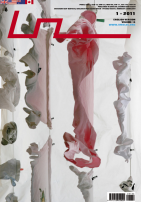





















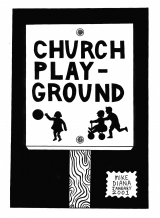
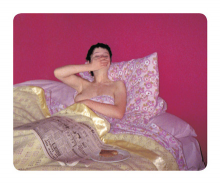
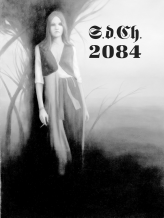
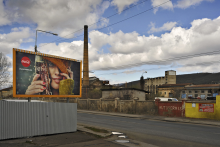


 We Are Rising National Gallery For You! Go to Kyjov by Krásná Lípa no.37.
We Are Rising National Gallery For You! Go to Kyjov by Krásná Lípa no.37.
Комментарии
Статья не была прокомментированаДобавить новый комментарий